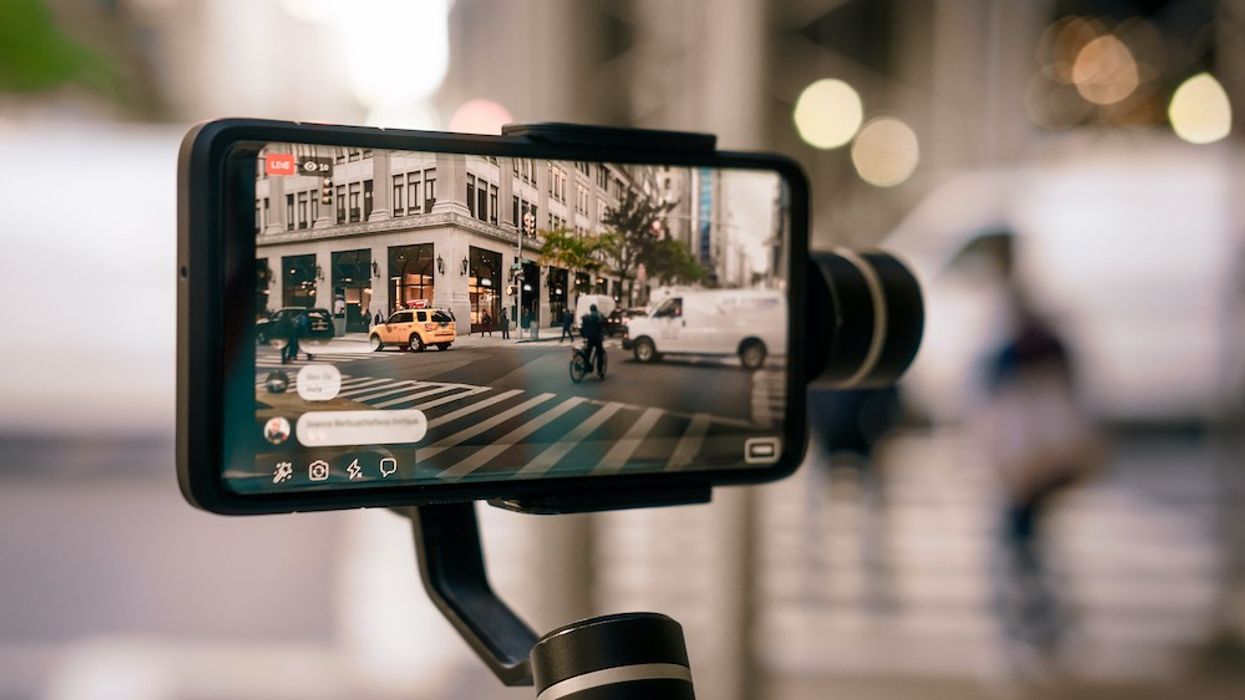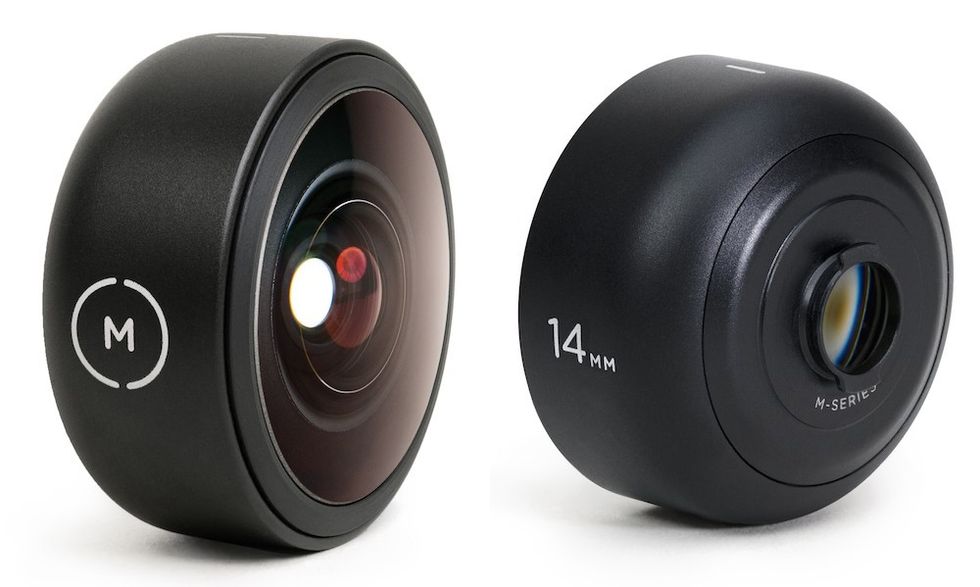How to Get Your Smartphone Ready to Make Films
Want to turn your smartphone into a powerful filmmaking machine? Here are some tips to get you started.

Gone are the days when you'd need a camera package worth tens of thousands of dollars to make a film. These days, all you really need is the handy smartphone nestled snuggly in your pocket.
Admittedly, though, a stark naked smartphone may not give you the options necessary to make your film loo and feel as cinematic as you want it to, which is why it helps to know which inexpensive, accessible tools are out there that can help you achieve those results.
So, buckle up and get your holiday-weary credit cards ready. Here are some essential tools that you should consider acquiring if you want to make films with your smartphone. Once you're done, be sure to check out our primer on editing videos ON your smartphone!
Rig It Up
Contrary to popular belief, a smartphone's primary purpose is not to communicate, navigate unknown territories, or even take overly filtered selfies when you're drunk and feeling cute on a random Tuesday afternoon.
Their primary purpose is to be dropped.
This is why it's so important to rig up your smartphone with a clamp, bracket, or ball head, because they make it possible to mount your phone to a camera cage. These things are essential for rigging up a bunch of useful accessories, like mics, monitors, and even lights, and usually utilize a 1/4" -20 screw holes, probably the most commonly used screw thread type in film gear.
So, to sum it all up: get a clamp, bracket, or ball head so you can mount your phone to a cage...then deck it out with accessories.
Here's a great video from Rubidium Wu about rigging smartphones:
Accessorize
Speaking of accessories, you might want to get your hands on some if you want to have options while making films with your smartphone. What kinds of accessories am I talking about? Let's run through a few.
Lenses
Some filmmakers think that the camera is the most important tool in your gear bag, but I'd argue that the lenses are just as, if not more, important. Lenses allow you to change the focal length, increase or decrease depth of field, and give your images a different style that you may not be able to get without them.
Luckily, there are a ton of great smartphone lens manufacturers out there that not only give you a wide range of focal lengths to choose from but also filters and other add-ons that are crucial for nailing exposure.
I'm a huge Moment fan and have been since their first Kickstarter campaign, but Olloclip, Black Eye, and Moondog Labs also offer some great options...some even have anamorphic lenses!
Mics
You can't make a good film without good sound, and if you're one-man-banding it, you'll want to find a mic that is small enough to mount to your pint-sized smartphone rig...and having the proper jack is also a bonus, though not a dealbreaker because adapters are a thing.
RØDE has some great video mics, including the VideoMic Me-L, the slightly bigger and spendier VideoMic NTG, or the iXY, which connects right to the bottom of your iPhone via the lightning connector.
Lights
Getting some on-board lights might be a great idea if you're shooting in the rough or need to get shots on the fly. Luckily, you don't have to lug around giant studio lights or larger LED panels.
You can opt for some adorable baby LED cubes, like the Lume Cube, or go for a pocket-sized LED, like the Aputure M9.
Stabilize It
The shaky handheld look is great...if it's intentional. If it's not, it'll make your work look amateurish...like a toddler shot it...which would be great...if it's intentional.
Stabilizers can help in this department and there are lots and lots of different kinds to choose from.
Handheld Gimbals
The smartphone filmmaker's go-to: the handheld gimbal. They're portable, easy to use, and are super fun to whip out and shoot on. You've got the DJI Osmo Mobile, Zhiyun Smooth 4, or the Moza Mini-MI, all of which are around $100 and offer a lot of the same features, like pan/tilt/roll/pitch control, as well as follow functionality.
Tripods
Regardless of whether you're shooting on an ARRI Alexa or an iPhone, every filmmaker needs a good tripod. You can go for something like a tabletop tripod, like the Manfrotto PIXI Min, or go for a multi-faceted tool like the Joby GorillaPod Mobile Rig, which has more arms and legs than you might know what to do with. Or, again, if you've done your due diligence and bought a smartphone clamp, bracket, or ball head, you can use virtually any tripod on the market.
Get Some Apps
Okay, now that you've got all that hardware swimming around in your brain, let's throw some software into the mix.
Smartphone filmmaking would be a whole lot more difficult without some dedicated apps to help you film and edit your way to cinematic success.
The first app you should consider, at least in my opinion, is FiLMiC Pro. It gives your smartphone so much more functionality, including manual control over everything from frame rates to audio, that it basically gives you a brand new camera.
Next up, Artemis Pro is an Emmy award-winning app that turns your phone into a powerful digital viewfinder.
Finally, Adobe Premiere Rush, LumaFusion are great options if you want to go full mobile filmmaker and actually edit on your smartphone, but...at this point, I wouldn't recommend that. (Although, LumaFusion is pretty dope.)
There are a ton of other filmmaking apps out there that you may not use 1.) as often, and 2.) during shooting, but are worth a try, like Scriptation for marking up scripts, Frame.io for video review and collaboration, and Shot Lister for...creating shot lists.
Okay! Now Do...You Know...Filmmaking Stuff
Okay, you've got your smartphone completely decked out now. It's sitting pretty inside a camera cage with a mic and LEDs mounted on the side, it's outfitted with a bomb ass mobile lens, you've got it wrapped around a lamppost thanks to your trusty GorillaPod, and you've changed up all of your camera settings because you've mastered FiLMiC Pro.
What now?
Well...you have to go do filmmaking stuff.
Like...go make a movie. That's what you've been working up to this entire time, honey! And now you're like a deer caught in the headlights?
Okay, don't panic. As an added bonus, I'll touch really quickly on a few key aspects of filmmaking that, to be quite honest, are more important than any gear you throw at your smartphone.
Story. Story. Story.
If you don't have a good story, stop what you're doing, put your camera down, and go write until it's good.
Without a good story, you have nothing.
Inspired Camera Movement
Gimbals and sliders are cool but don't be out there moving your camera around just for the sake of moving your camera around.
Camera movement should be intentional and tell your audience about something that's happening on-screen or within your story.
Lighting is Key
Don't neglect lighting. Why? Because you know when people ask what makes something cinematic, the answer is usually lighting.
It doesn't matter if you're shooting on an Alexa or a GoPro—if you're lighting sucks, your shot is going to have a really hard time looking professional and filmic.
Record Great Audio
Bad audio = bad movie.
Prove me wrong.

Wrapping Up
Hopefully, this post gave you some ideas on how to turn your smartphone into a mobile filmmaking powerhouse, but please don't get it twisted. You can have all the gear in the world and still make a crappy movie. (Let's get real...you can even be a great filmmaker with all the gear in the world and still make a crappy movie.)
The point is to not lean too heavily on gear acquisition because gear doesn't make films better, it just makes films easier to make.
It's also time for post, so here is what you need to know about editing videos on your smartphone.
















